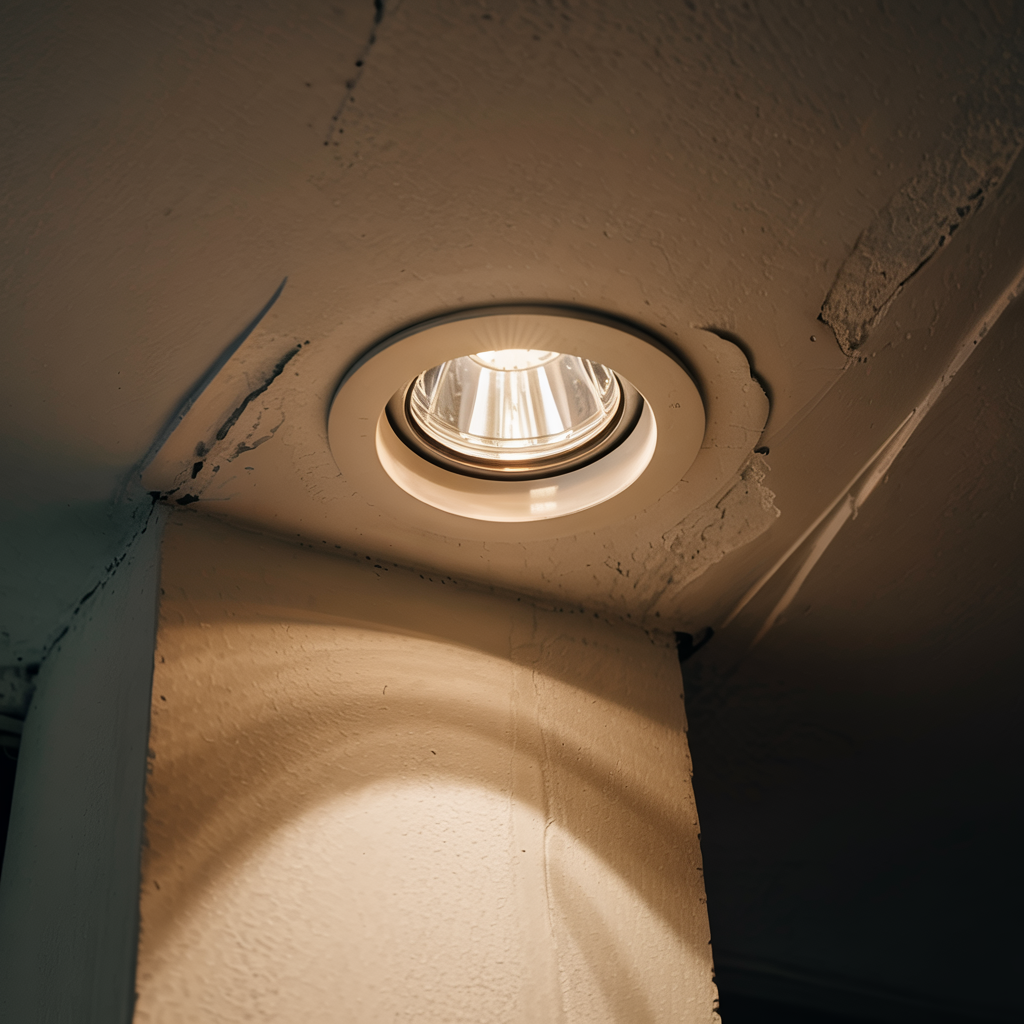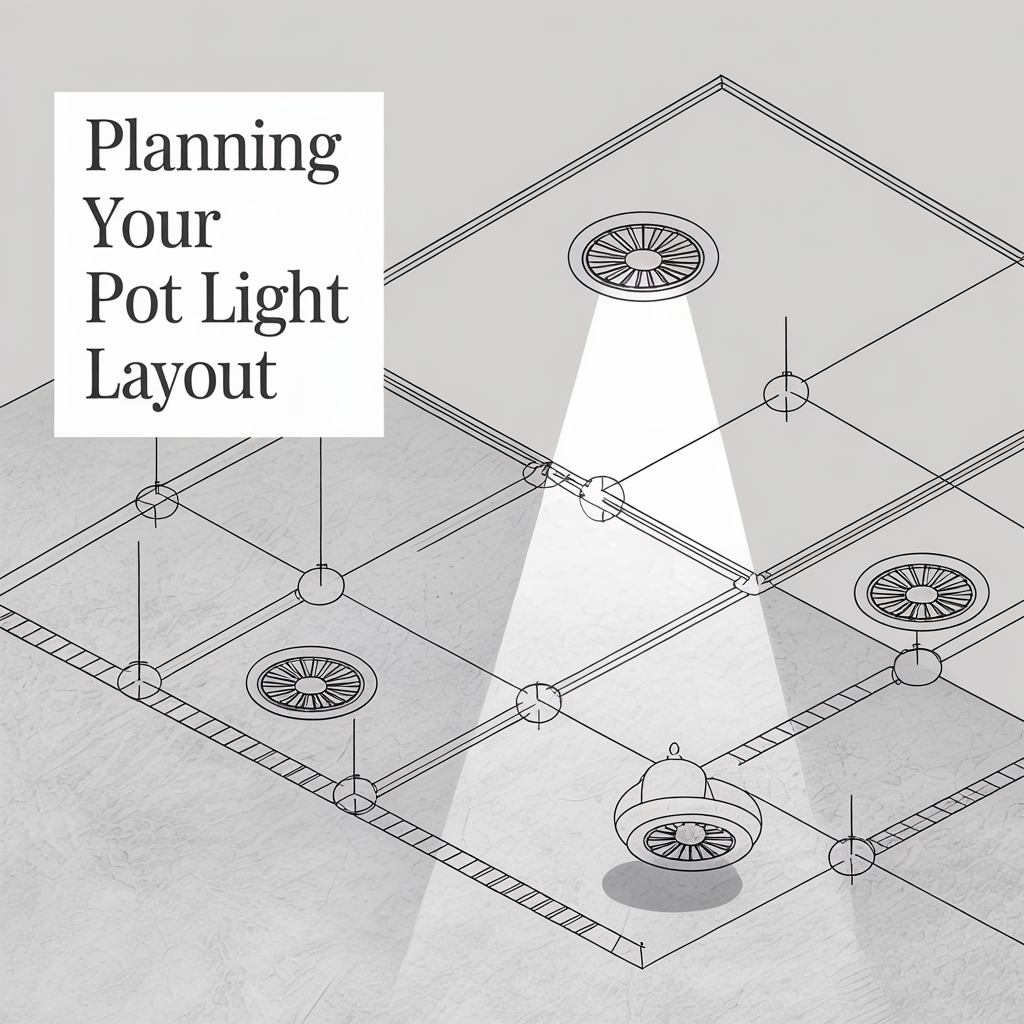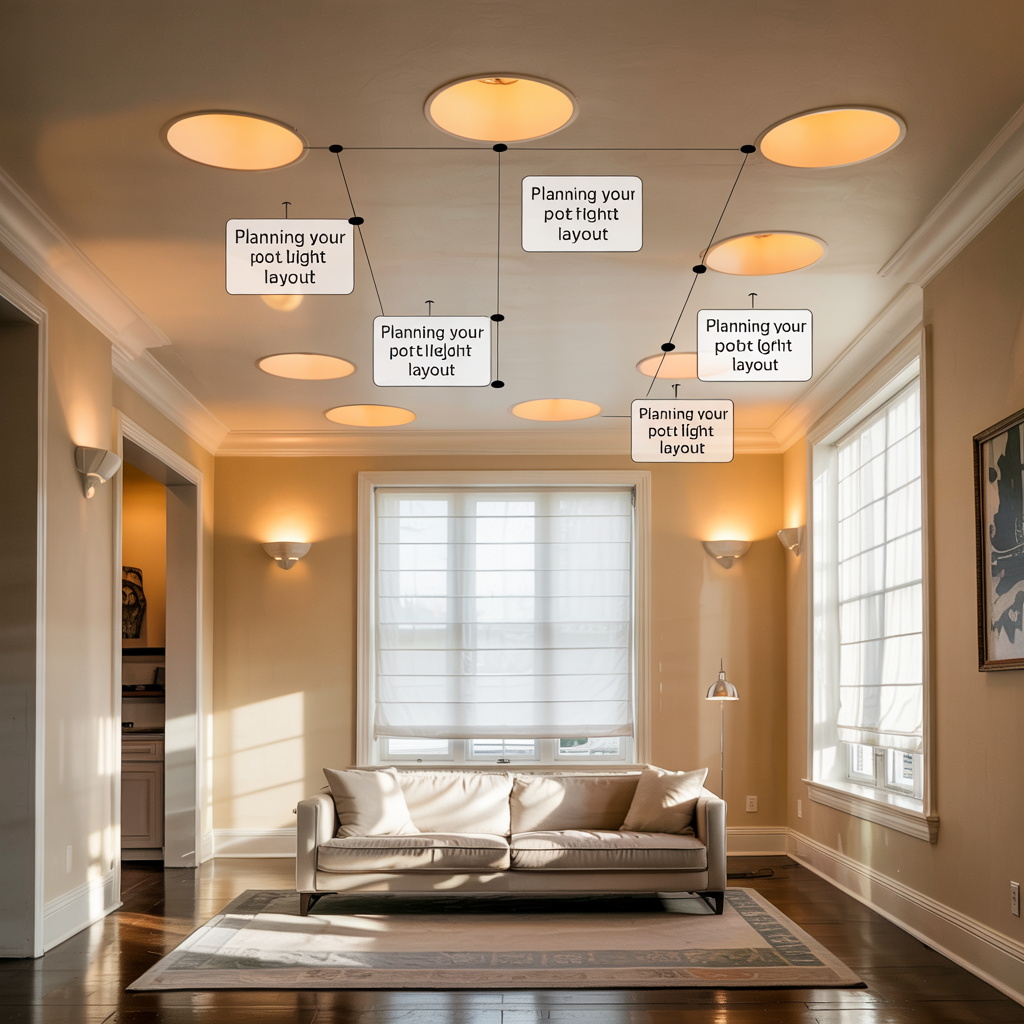Perfecting Your Living Room Lighting: Where To Place Pot Lights
Where to place pot lights? Place pot lights 4 to 6 feet apart, centered over key areas like countertops, seating zones, or walkways. Keep them 12 to 18 inches from walls to reduce shadows. In kitchens and bathrooms, align with task areas. Use dimmers for flexibility in living rooms and bedrooms. Pot lights, also known…
Where to place pot lights? Place pot lights 4 to 6 feet apart, centered over key areas like countertops, seating zones, or walkways. Keep them 12 to 18 inches from walls to reduce shadows. In kitchens and bathrooms, align with task areas. Use dimmers for flexibility in living rooms and bedrooms.
Pot lights, also known as recessed lights or downlights, are fixtures embedded into your ceiling. They offer a sleek, low-profile way to illuminate a room, unlike hanging pendant lights or surface-mounted fixtures. They’re incredibly versatile and can be used in a variety of settings.
Pot lights come in various styles, including different sizes, finishes (e.g., brushed nickel, chrome), and light distributions (e.g., narrow beam, wide beam). Consider your room’s size and desired ambiance when choosing the right type.
Where to place pot lights?
- Adjustable pot lights: Allow you to direct the light beam, offering greater control over illumination.
- Fixed pot lights: Provide a consistent, downward-directed light source.
- LED pot lights: Energy-efficient and long-lasting, making them a popular choice.
Why Proper Pot Light Placement Matters?

Creating Ambiance and Mood
Strategic pot light placement significantly impacts the atmosphere of your living room. Too few lights can make the space feel dim and uninviting, while too many can create harsh, glaring illumination. The goal is to achieve a balanced and inviting feel.
Highlighting Architectural Features
Pot lights can be used to accentuate architectural details like crown molding, beams, or recessed shelving. By strategically placing lights near these features, you draw the eye and add visual interest to the room.
Task Lighting vs. Ambient Lighting
Pot lights can serve both task lighting (e.g., reading in a corner) and ambient lighting (general illumination). A well-planned lighting scheme integrates both types effectively.
Read More: 15 Brilliant LED Closet Lighting Ideas to Brighten Up Your Wardrobe
Planning Your Pot Light Layout

Assessing Your Living Room
Begin by thoroughly evaluating your living room’s dimensions, layout, and existing features. Consider the size of your room, ceiling height, and the placement of furniture. Take measurements to ensure accurate planning.
Determining the Number of Pot Lights
The ideal number of pot lights depends on your living room’s square footage and desired brightness. A general rule of thumb is one pot light for every 50-100 square feet, but this can vary based on factors like ceiling height and desired light intensity.
Creating a Lighting Plan
Sketch a floor plan of your living room, marking the locations of furniture, windows, and other features. Use this plan to experiment with different pot light placements, considering the room’s functionality and aesthetics.
Read More: How to Get Natural Light Into a Room Without Windows? A Complete Guide
Common Pot Light Placement Strategies

Perimeter Lighting
This involves placing pot lights evenly around the perimeter of the room, providing general illumination. It’s a good starting point for smaller living rooms or those with minimal furniture.
Zoned Lighting
This strategy divides the living room into different zones, each with its own set of pot lights. For example, you might have one zone for conversation, another for reading, and another for entertainment.
Accent Lighting
Strategic placement of pot lights can highlight artwork, decorative features, or architectural details. This adds depth and visual interest to the space. Consider using adjustable pot lights for maximum control.
Read More: Lighting A 20×20 Room: How Many Can Lights Do You Need?
Factors Affecting Pot Light Placement
Ceiling Height
Higher ceilings may require more pot lights to achieve adequate illumination. Consider using a combination of pot lights and other lighting sources to avoid a washed-out appearance.
Room Shape and Size
The shape and size of your living room directly influence the ideal placement of pot lights. A long, narrow living room might benefit from pot lights spaced along its length, while a square room might look better with a more symmetrical arrangement.
Furniture Placement
Avoid placing pot lights directly above furniture, as this can create harsh shadows. Instead, consider the placement of furniture when determining pot light locations to avoid glare and ensure even illumination.
Avoiding Common Mistakes
Uneven Illumination
Improper spacing can result in uneven lighting, creating dark spots and hot spots. Plan your pot light placement carefully to ensure even distribution of light across the room.
Glare and Shadowing
Poorly placed pot lights can cause glare or harsh shadows. Consider using adjustable pot lights or diffusers to mitigate these issues.
Overlighting or Underlighting
Too many pot lights can create an overly bright space, while too few can leave the room feeling dim. Find the right balance to achieve the desired ambiance.
Integrating Pot Lights with Other Lighting
Layered Lighting Approach
Combine pot lights with other lighting sources, such as table lamps, floor lamps, and wall sconces, for a layered lighting effect. This provides versatility and allows you to adjust the ambiance based on your needs.
Using Dimmers for Control
Install dimmer switches for your pot lights to control the brightness level and create different moods. This gives you greater flexibility and allows you to adjust the lighting to suit various occasions.
Choosing the Right Bulbs for Your Pot Lights
Color Temperature
Consider the color temperature of your bulbs (measured in Kelvin). Warm white (2700-3000K) creates a cozy atmosphere, while cool white (5000-6500K) is brighter and more energizing. Choose a color temperature that suits your living room’s style and function.
Light Output
The light output (measured in lumens) determines the brightness of your bulbs. Higher lumen ratings indicate brighter light. Choose a lumen rating appropriate for the size of your living room.
Professional Installation Considerations
Hiring an Electrician
While you might be tempted to install pot lights yourself, it’s crucial to hire a qualified electrician for safety reasons. Incorrect wiring can lead to electrical hazards.
Cost of Installation
The cost of professional pot light installation varies based on the number of lights, the complexity of the installation, and your location. Get multiple quotes from reputable electricians before making a decision.
Troubleshooting Pot Light Issues
Flickering Lights
Flickering pot lights might indicate a loose connection or a faulty bulb. Check the wiring and replace the bulb if necessary. If the problem persists, call an electrician.
Dim Lights
Dim lights could signify a faulty bulb, a loose connection, or a problem with the dimmer switch. Check the wiring, replace the bulb, and inspect the dimmer switch to determine the cause.
Frequently Asked Questions
What is the ideal distance between pot lights?
The ideal spacing between pot lights depends on several factors, including the room’s size, ceiling height, and the light distribution of the fixtures. A general guideline is to space them 6-8 feet apart, but you may need to adjust this based on your specific needs.
How many pot lights do I need for a 15×15 living room?
For a 15×15 foot living room (225 square feet), you might consider 5-7 pot lights, depending on ceiling height and desired brightness. A good approach is to map out the placement and check if the lighting is sufficient based on the light output of chosen bulbs.
Can I install pot lights myself?
While some people attempt DIY pot light installation, it’s highly recommended to hire a licensed electrician. Improper wiring can cause electrical fires or shocks, posing significant safety risks.
How much do pot lights cost?
The cost of pot lights varies depending on the type, brand, and features. You can find affordable options starting around $10-$20 per light, while higher-end models can cost significantly more. Factor in the cost of installation, which can add a substantial expense.
Final Thoughts
Choosing the right pot light placement for your living room is a crucial step in creating a functional and aesthetically pleasing space. By carefully considering factors such as room size, ceiling height, and furniture arrangement, you can design a lighting scheme that enhances the ambiance and highlights your living room’s unique features. Remember, a layered lighting approach, incorporating other light sources alongside pot lights, adds versatility and allows for mood adjustments. Don’t hesitate to consult with an electrician for professional installation to ensure safety and optimal results. Investing time and consideration in your pot light placement will ultimately pay off in a living room that feels welcoming, comfortable, and beautifully illuminated.

